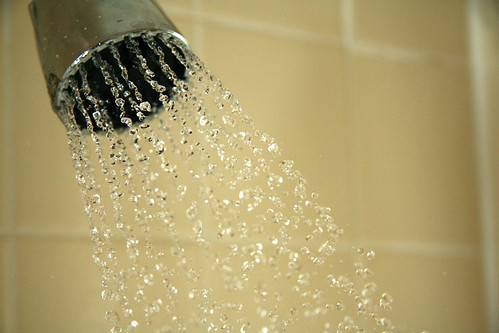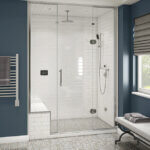How To Increase Water Pressure in Your Showerhead
If you think your home’s water pressure is poor, you’re not alone. Many people deal with trickling showers that barely allow them to wash the shampoo out of their hair. In addition to being frustrating, low water pressure can actually cause you to waste more water because it tends to lead to longer showers. Fortunately, you no longer have to settle with this issue or wait until you’re at someone else’s house to take a satisfying shower. Here at Allied Plumbing & Heating Supply Co., we’re eager to share the best tips for increasing water pressure in your showerhead.
Clean Your Showerhead

Your showerhead is probably due for a good cleaning, as the minerals in tap water can lead to buildup. Start by removing the top of the showerhead and detaching easily removable pieces. Use a toothpick and specific showerhead-cleaning solutions to scrape away mold, mildew, calcium, rust, mineral deposits, and scale. If debris remains, soak the components in a bowl of white vinegar for eight hours. The acidity should make it easier to scrub away stubborn buildup.
Check for a Flow Restrictor
Even if your showerhead is as clean as it could be, a flow restrictor will make it have low pressure. These components often come with new showerheads and are meant to help you save on your water bills. If you want to prioritize increasing your water pressure, you can use these steps to remove the flow restrictor:
- Unscrew the showerhead.
- Identify the rubber seal inside of the connector nut.
- Remove the rubber seal.
- Use tweezers or pliers to remove a piece of plastic with a hole or holes in it.
- Replace the rubber seal.
- Reinstall the showerhead.
Of course, these instructions might vary depending on what type of showerhead you have. If you don’t have the owner’s manual for yours, look online to find the right instructions. Additionally, ensure you comply with your area’s legal regulations before tampering with flow restrictors.
Buy a New Showerhead
While cleaning can work wonders, the type of showerhead you have just might not cut it for the kind of pressure you want. Consider gauging the flow of your current showerhead by looking at the label, with anything 2.6 gallons per minute or higher being a high-flow showerhead. If there’s no label, gauge the flow by placing a bucket with a 1-gallon marker under the showerhead. Let the water run for 20 seconds. If the bucket fills to the 1-gallon marker, you have a high-flow showerhead. A low-flow apparatus won’t fill the bucket to its 1-gallon marker in 20 seconds.
If you have a low-flow showerhead, upgrade to a high-flow model. As you should before tampering with flow restrictors, ensure that your new showerhead complies with local regulations. Many areas implement regulations on showering devices to help conserve water.
Adjust Showerhead Settings
Many showerheads come with settings to help you customize your experience. Even if you haven’t touched these settings in a while, they can gradually shift over time. A specific setting might make it feel like your water pressure has become worse when you can fix it by simply shifting the settings. Adjust the settings while the water is running to see if you notice increased pressure.
Check for Kinks and Leaks
Many people have handheld showerheads to make it easier to wash those hard-to-reach areas. While these devices are convenient, they create more potential problems when it comes to your water pressure. Kinks and leaks in the water hose might restrict a consistent flow. Be sure to check for these issues and fix them by straightening out the hose or patching up the leak. In some cases, it might be ideal to replace a worn handheld showerhead altogether.
Check the Curbside Main Shut-Off
Though water pressure problems might result from an issue within your home, you might want to look outward. Water enters your property through a curbside water meter and shut-off valve. While turning a handle might seem like an easy fix, most water providers don’t allow you to tamper with the meter. Call your provider to have a worker come to your neighborhood and adjust the handle.
Check the Main Shut-Off Valve
You might not be able to turn the handle of your curbside main shut-off, but the main shut-off valve in your home is fair game. A valve with a round handle like a hose bib might cause low water pressure if it isn’t rotated all the way counterclockwise. If your curbside main shut-off has a lever instead of a round handle, the lever should be completely parallel to the water pipe. Don’t use too much pressure so you don’t break the valve. If any of the equipment has excessive corrosion, call an expert plumber to address the issue.
Flush Your Hot Water Heater
A water heater becomes clogged when debris and sediment build up in the pipes. Many homeowners neglect this routine task because of the time it takes, but it’s relatively simple if you follow the instructions in the user’s manual or on the outside of the unit.
Switch Up Your Routine
Something as simple as switching up your routine might fix your water pressure issues, especially if you live close to your neighbors. Multiple households running water can decrease the pressure available in your shower. If you usually shower in the morning, try showering in the afternoon or at night to see if it fixes the problem. You can also avoid running your washing machine and dishwasher to ensure that water goes right to your shower.
As this guide has demonstrated, you can implement several measures to increase water pressure in your showerhead. If you’re still experiencing problems, call Allied Plumbing & Heating today. Our experts can get to the root of the problem by providing products that resolve more drastic issues. Our inventory features top products ranging from shower pumps to single-handle volume controls. With these new devices, you can dramatically improve your showers and enjoy the high water pressure you deserve.
Photo Credit: Showerhead by Andrew Magill is licensed with CC BY 2.0

